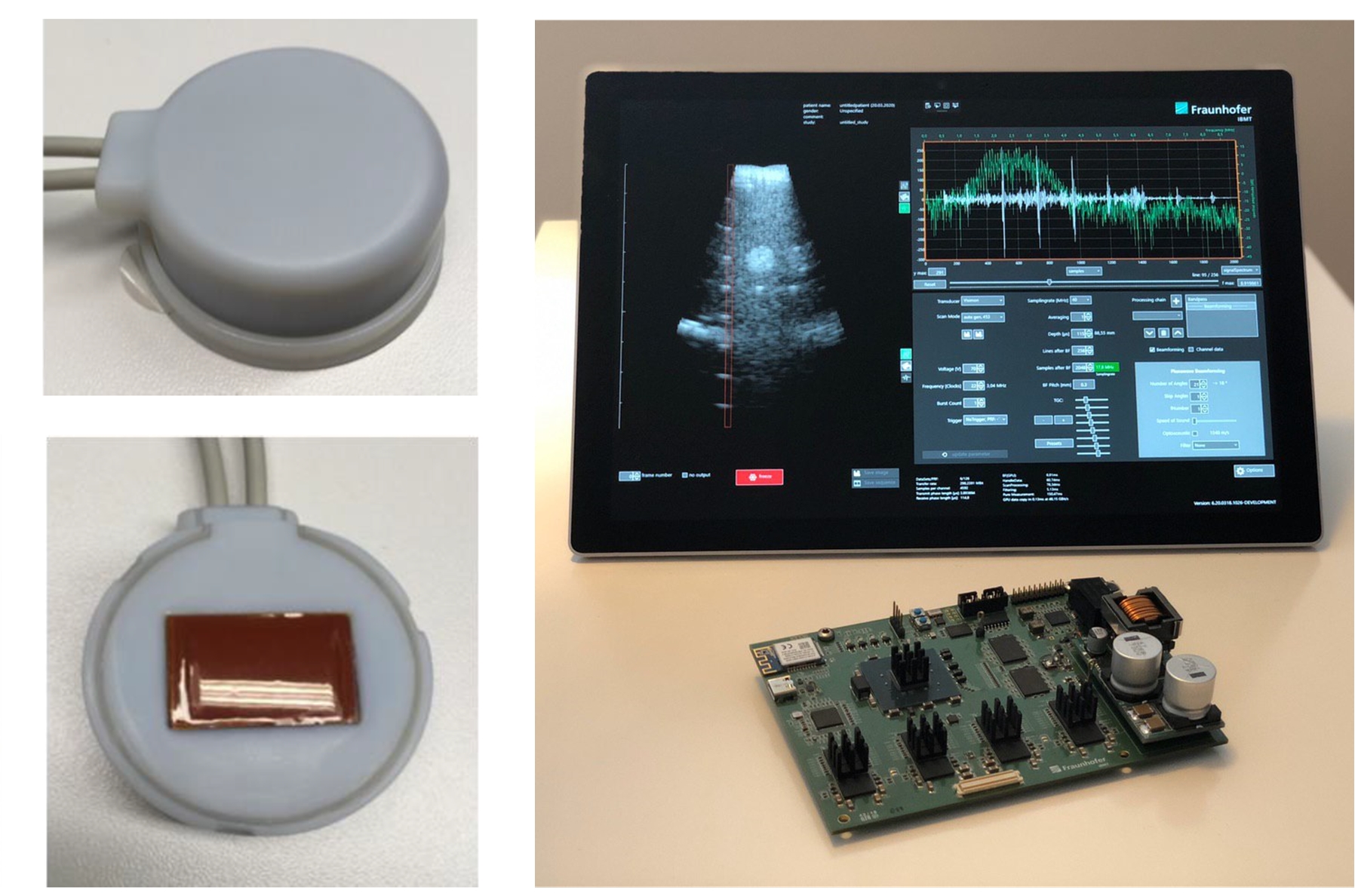Miniaturized ultrasound systems in medical technology
Intelligent ultrasonic sensors for postoperative bladder monitoring
After surgeries on the bladder, prostate or kidneys, a permanent irrigation of the bladder is often decisive for a successful healing process. An intelligent system called "VisIMon" was designed to support this. The Fraunhofer Institute for Biomedical Engineering IBMT is developing the miniaturized ultrasound system for automated monitoring of bladder irrigation.

Blood in the urine is a common symptom after surgical interventions on the urinary tract of any kind. Continuous bladder irrigation is used as a standard after operations on the bladder, prostate or kidneys to avoid complications caused by blood coagulation. If there are blood clots, there is a high risk that this clot can fill the bladder, which often makes further (avoidable) surgery necessary. However, constant monitoring of bladder irrigation is not possible in everyday clinical practice, making a technical solution for effective, permanent monitoring most interesting.
Intelligent sensors for effective automated monitoring
The BMBF joint project "VisIMon", led by the German Research Center for Artificial Intelligence, aims to enable automated monitoring that will contribute to improved patient care while at the same time reducing the workload on staff. "VisIMon" stands for a networked, intelligent and interactive system for the continuous, perioperative monitoring and control of an irrigation device and for the functional monitoring of the lower urinary tract. Since the end of 2017, an interdisciplinary team of scientists, physicians and industry has been developing a small module worn on the body that monitors the irrigation process with the aid of various sensors and which can ideally be integrated in established care procedures. Innovative data handling approaches make it possible to realize completely new concepts - such as medical devices that automatically exchange data with the hospital's IT network. With more than 200,000 applications per year in Germany, the development is extremely attractive not only from a medical but also from an economic point of view.
Miniaturized ultrasound systems for ideal patient care
The Fraunhofer Institute for Biomedical Engineering IBMT possesses many years of experience in the design, development and manufacturing of innovative ultrasound transducers and systems for research and medical application. Within the framework of the joint project, IBMT scientists are developing a miniaturized ultrasound system for the automated monitoring of bladder irrigation. The system consists of an adhesive ultrasonic transducer patch, which, together with miniaturized electronics and automated evaluation algorithms, will be used to monitor bladder irrigation and detect possible bleeding. A patented ultrasound patch technology by IBMT was used to develop the highly compact 32-element sensor that can be attached to the skin for continuous postoperative monitoring of the bladder. The newly developed 32-channel electronics, on which the ultrasound data are processed and evaluated, can be controlled via mobile consumer devices (e. g. a tablet). With the selected system concept, a large part of the data processing - such as the reconstruc¬tion of the measured signals to cross-sectional images of the bladder - is carried out on the tablet. The concept not only leads to lower costs, but also allows to take profit from the continuously improving performance of new end-user devices. The "VisIMon" software is also designed to forward data from various patient systems together with other parameters to central processing units in order to optimally ensure the continuous monitoring of bladder irrigation, which is indispensable after a surgical procedure, even in a tense staff situation.
Potential for further application scenarios
The concept of a low-cost ultrasound hardware such as developed within the project, whose performance spectrum is mostly defined by the algorithms used for signal processing, can be transferred relatively easily to other applications. For instance, the technology could be used as a monitoring system for incontinence patients. An ultrasound transducer patch could constantly monitor the bladder level and send signals to a mobile end user device via miniaturized electronics, where they could be translated into recommendations for action after automated data analysis. Together with the open interfaces and access to all data types along the processing pipeline, the system can also be used as a low-cost ultrasound research system. In addition, as application example within the medical-diagnostic field, it could be used as low-cost imaging system, for example for areas suffering from medical undersupply.
Project VisIMon
Funding: BMBF 16SV7861K
Funding period: 11/2017-10/2020
Coordinator
Dr. rer. nat. Dipl.-Inf. Gerd Reis
DFKI - German Research Center for Artificial Intelligence, Kaiserslautern, Germany
Phone: +49 631 20575 2090
E-mail: Gerd.Reis@dfki.de
Partners (Germany)
Albert Ludwig University Freiburg
Fraunhofer Institute for Biomedical Engineering IBMT, Sulzbach
Lohmann & Birkner Health Care Consulting GmbH, Berlin
Digital Biomedical Imaging Systems AG, Pforzheim